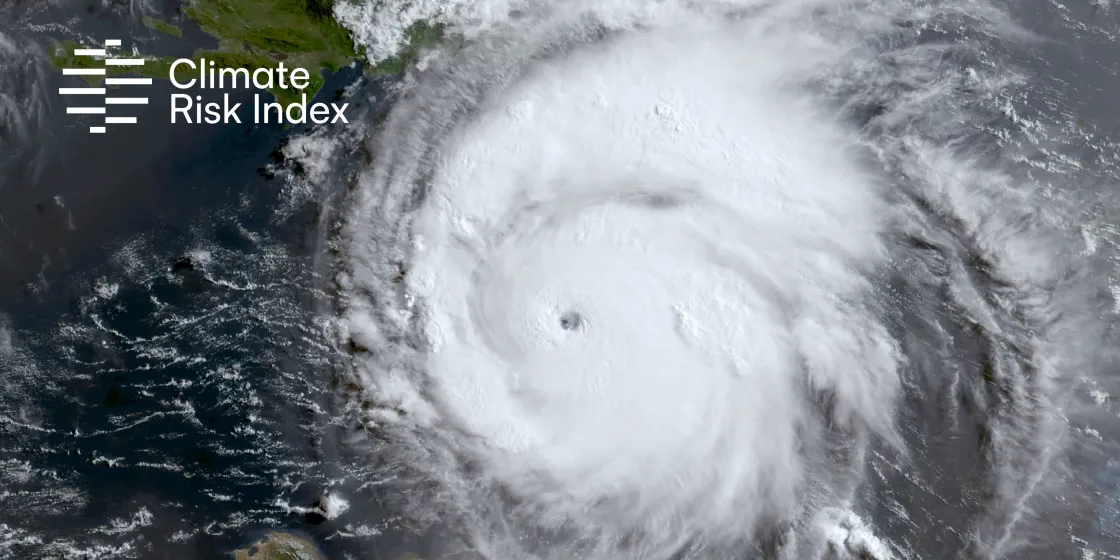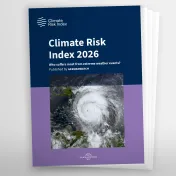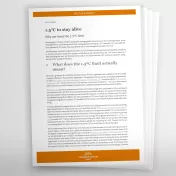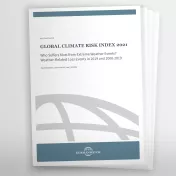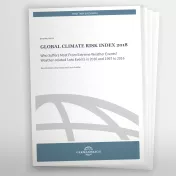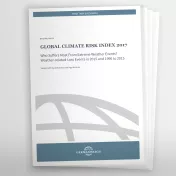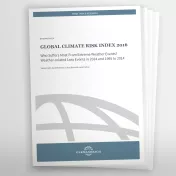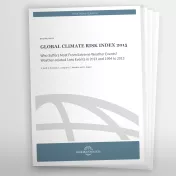The Climate Risk Index (CRI), published since 2006, is one of the longest running annual climate impact-related indices. The CRI analyses climate-related extreme weather events’ degree of effect on countries. In doing so, it measures the consequences of realised risks on countries.
This retrospective index ranks countries by their economic and human impacts (fatalities, as well as total affected), with the most affected country ranked highest.
The CRI visualises such events’ degree of effect at one year before the index’s publication and over the preceding 30 years. The index contextualises international climate policy debates and processes with a view to the climate risk countries are facing. It simplifies the aggregation and understanding of climate-related extreme weather events’ impacts across different regions and time periods. The most strongly affected countries rank highest and should view the CRI results as a warning sign that they are at risk of frequent events or rare and unusual extreme events.
CRI 2026 ranking and results: highlights
Scorching heat, heavy rainfalls, raging wildfires, deadly floods, and devastating storms: The manifestations of extreme weather events have become too common in a new reality worldwide. The CRI 2026 sheds light on inaction’s growing cost. It reveals the mounting human and economic toll.
From 1995 to 2024, more than 832,000 lives were lost and direct economic losses of nearly USD 4.5 trillion (inflation-adjusted) were recorded, driven by more than 9,700 extreme weather events. The frequency and intensity of climate-related disasters continue to rise, and these figures underscore the urgent need for climate action.
For a comprehensive overview of the results, see the full report here.
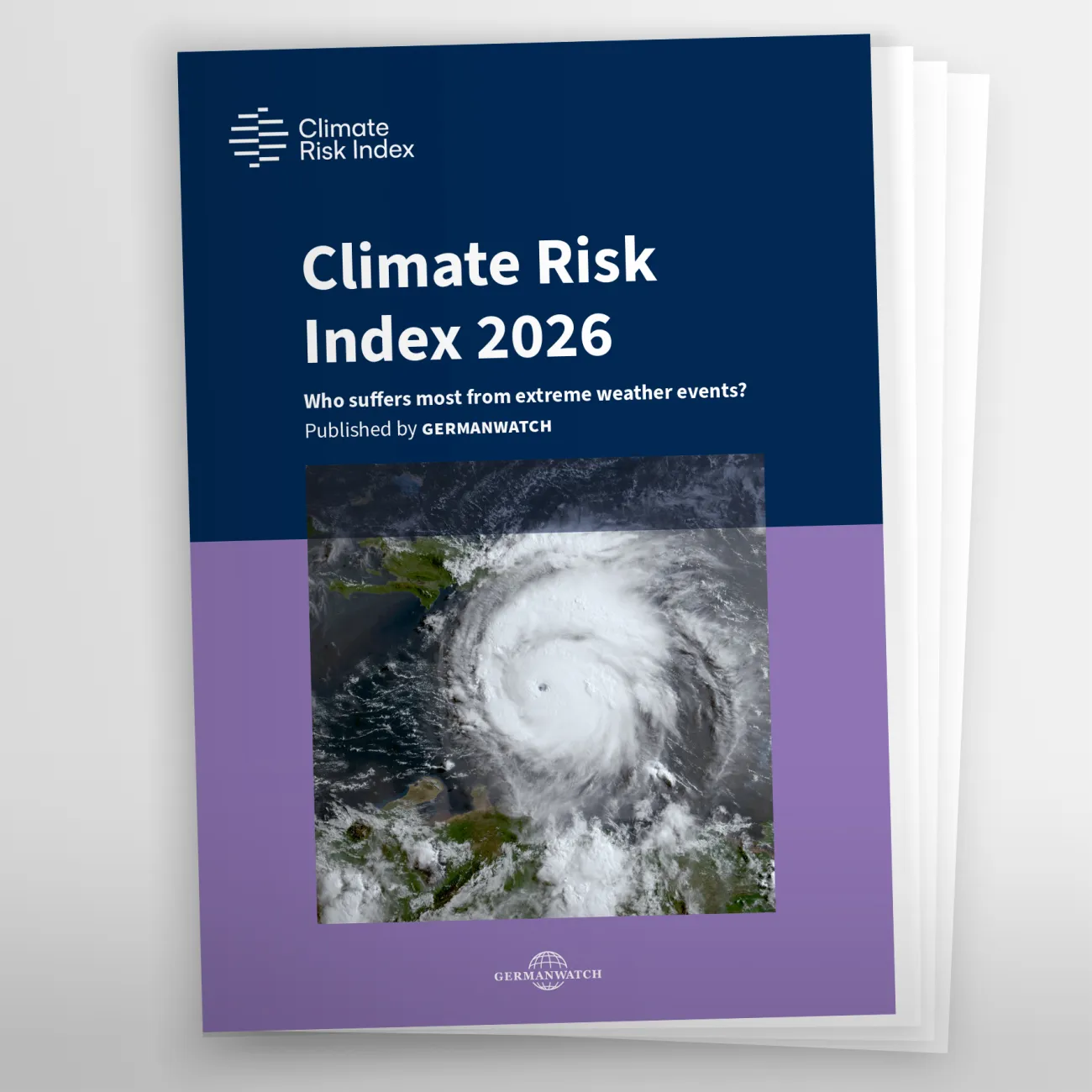
For a brief overview of the results, see the summary of the report here.
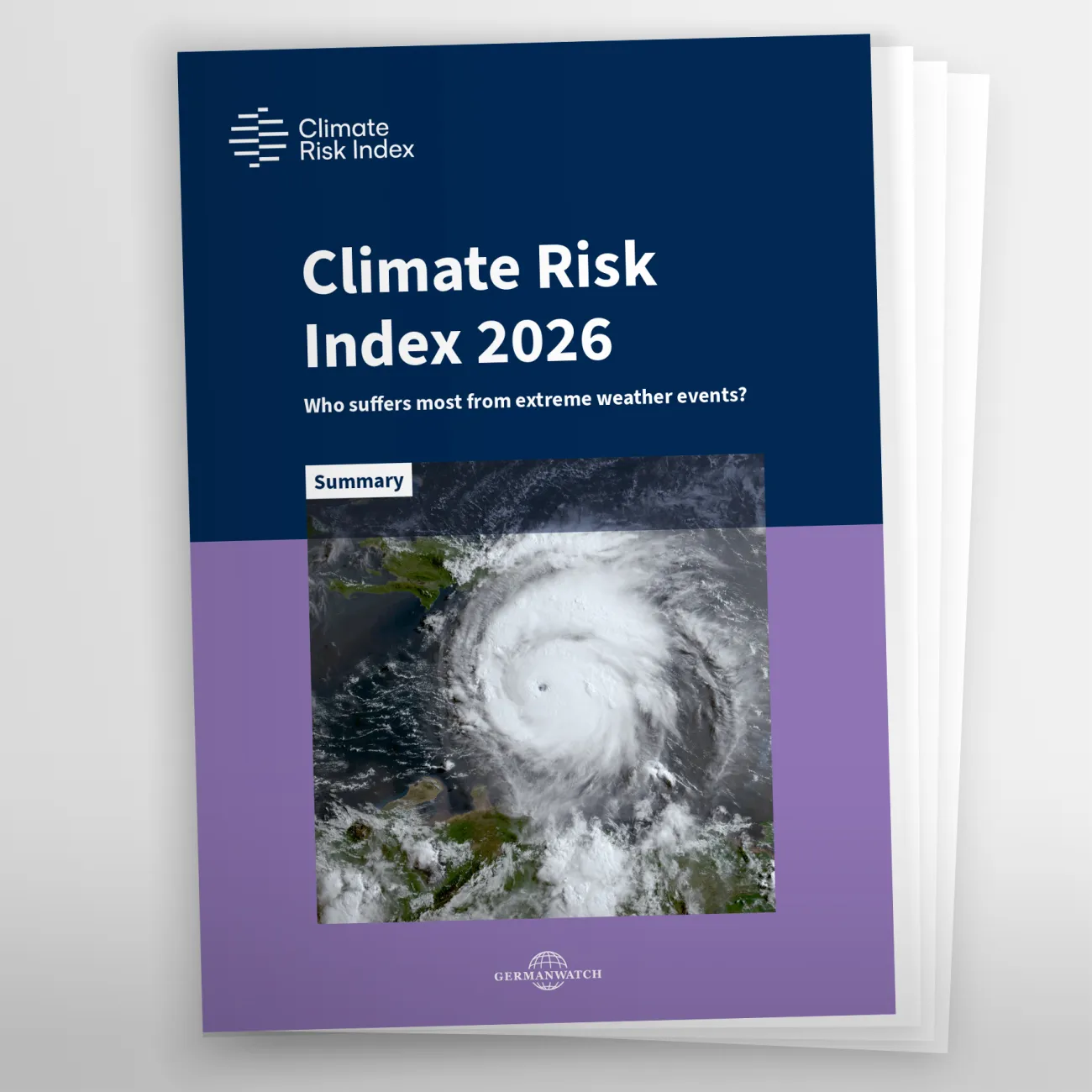
Methodology
The CRI methodology involves analysing extreme weather events’ impacts via three hazard categories: hydrological, meteorological, and climatological. The index visualises these events’ impact on countries both one year prior to publication and over the preceding 30-year period. It draws on data from the EM-DAT international disaster database, World Bank, and International Monetary Fund (IMF). The index considers absolute and relative impacts, using six key indicators: economic loss, fatalities, and affected people – each in absolute and relative terms.
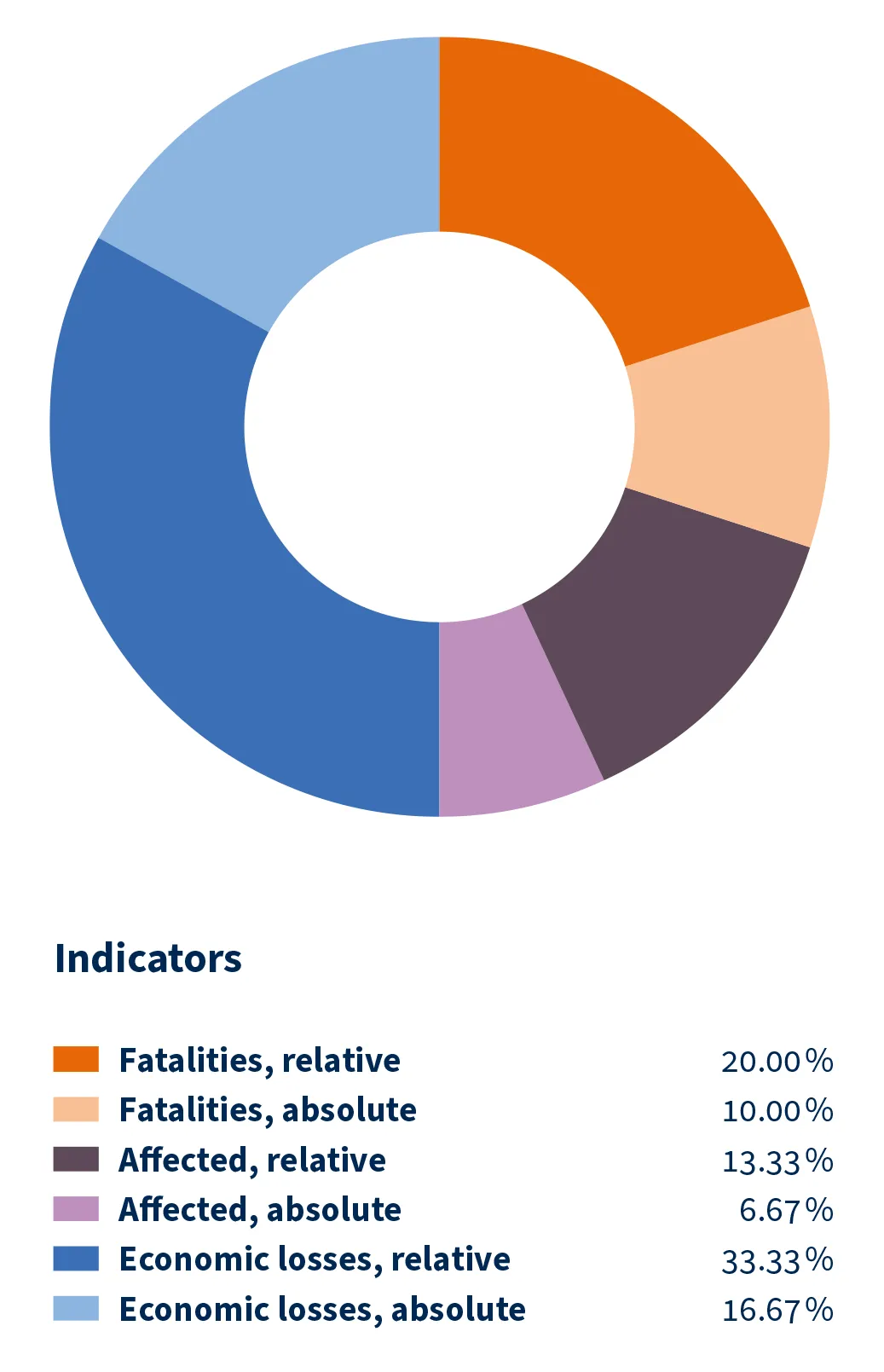
Explore an interactive map of the full ranking and results. Click on a country to see how extreme weather events affect it, in terms of the human and economic impacts.
2024: Most affected countries in 2024. This map highlights the countries extreme weather events most affected in 2024, based on the impacts on people and on economic loss.
1995–2024: Most affected countries in 1995–2024. This map shows the countries extreme weather events most affected from 1995 to 2024, based on the impacts on people and on economic loss.
CRI 2026 key messages
- The Climate Risk Index (CRI) ranking indicates that, in 1995–2024, Dominica, Myanmar, and Honduras were the countries most affected by extreme weather events’ impacts.
- St. Vincent and the Grenadines, Grenada, and Chad were the most affected by extreme weather events’ impacts in 2024.
- From 1995 to 2024, more than 832,000 people died worldwide and direct economic losses of over USD 4.5 trillion (inflation-adjusted) directly resulted from more than 9,700 extreme weather events.
- Floods, storms, heat waves, and drought were the most prominent impacts short- and long-term. From 1995 to 2024, heat waves (33%) and storms (33%) caused the most fatalities. Floods accounted for almost half of those affected (48%). Storms caused, by far, the greatest economic losses (58% or USD 2.64 trillion inflation-adjusted).
- The most affected countries in the long-term index, for 1995–2024, can be divided into those: (1) most affected by highly unusual extreme events (e.g. Dominica, Myanmar, Honduras, and Libya) and (2) affected by recurring extreme events (e.g. Haiti, the Philippines, Nicaragua, and India). Climate science clearly shows that climate change raises the risk for both categories and strongly indicates that it contributes to transforming unusually extreme events into ongoing threats, creating a new normal.
- The CRI indicates that all countries are affected, but those in the Global South are particularly impacted. In both the short- and long-term indices, extreme weather events’ impacts particularly affected poorer Global South countries. In 2024, eight of the 10 most affected were in the low-income and lower-middle-income group.[1] Between 1995 and 2024, six of the 10 most affected were lower-middle-income, including one Small Island Developing State and three Least Developed Countries. These countries’ coping capacities are substantially lower than others’. None of the 10 most affected over the previous 30 years were in the high-income group, and only one for 2024.
- The CRI ranking is based on the best publicly available historical dataset (at the time of publication) on extreme weather events’ impacts. These events and their impacts are often underreported, especially those in Global South countries, because of data quality and coverage challenges, and data gaps. This can lead to the ranking less accurately capturing all experienced impacts for all countries.
- Human-induced climate change affects the frequency and intensity of extreme weather events and leads to widespread adverse climate impacts. El Niño influenced many extreme events at the beginning of 2024. However, attribution science found that climate change helped fuel these events even more than El Niño.[2] Climate science also found that, in 2024, human-caused climate change added 41 days of dangerous heat for billions of people worldwide, greatly impacting vulnerable populations and driving other extreme weather events, such as intensified hurricanes and wildfires. The summer of 2024 was the hottest on record, with two billion people experiencing 30+ risky heat days.[3]
- COP 30 should find effective ways to close the global ambition gaps, as the CRI 2026 results illustrate: Global emissions must be reduced immediately, adaptation efforts must be accelerated, effective solutions to address loss and damage must be implemented, and adequate climate finance must be provided. Courts this past year have confirmed this urgency. An International Court of Justice advisory opinion clarified that states have binding legal duties to prevent and address the harmful effects of climate change – including stronger mitigation, adaptation, and loss and damage actions – by providing climate finance.
[1] For a definition of income groups, see World Bank (2024). World Bank Country and Lending Groups, 2024.
[2] World Weather Attribution (2024). When Risks Become Reality: Extreme Weather In 2024.
[3] Climate Central (2024). People Exposed to Climate Change: June-August 2024.
FAQ: Understanding the CRI
The CRI is a tool that assesses extreme weather events’ impacts on countries and regions. It ranks countries based on these events’ economic and human impacts one year before publication and over the preceding 30 years. In this way, it measures realised risks’ consequences for countries.
The CRI has not been available in recent years because extreme weather event data from the previous data provider was discontinued. The index now uses the EM-DAT international disaster database as its primary data source.
In addition to the new database for extreme weather events, a new normalisation technique is applied together with an updated weighting of the indicators.
The CRI measures actual human and economic impacts from extreme weather events. It is a retrospective analysis of realised climate risks.
The CRI is updated annually, incorporating the latest data on extreme weather events from one year prior. Therefore, the CRI 2026 analyses available data from 2024.
CRI 2026 covers 174 countries. Some countries are not reflected because of data availability.
The index examines hydrological, meteorological, and climatological events. Fatalities and economic loss from seven hazard types are included in these categories. A composite score is then generated for ranking countries.
The CRI relies on data from EM-DAT, the World Bank, and the IMF.
This occurs because small countries often have higher relative fatalities and economic losses, owing to their smaller populations and GDP. Thus, extreme events’ impacts are more significant in relative terms, even if absolute losses are smaller.
No, it cannot. The CRI is a retrospective analysis of past extreme weather-related impacts. However, it serves as a warning for countries likely to face similar events in the future.
You can access the full list of country rankings in the annex of the full report.
The CRI relies on the best publicly available databases for generating the results. However, data gaps arise due to variations in data quality and coverage, especially regarding the Global South. Under-representation in research, uneven distribution of meteorological stations, and differing data collection techniques across countries are among the key challenges.
Currently, the CRI is applied only at the national level.
No, the CRI focuses on sudden-onset extreme weather events, such as floods, storms, and heat waves. Slow-onset changes, such as sea-level rise, are not included.
Yes, the CRI team welcomes feedback and suggestions for methodological improvements. Please submit your ideas via this email: cri@germanwatch.org.
The CRI database will generally be available for research and academic purposes. Please email your request for access to cri@germanwatch.org and please provide a clear description of how you plan to use the data. Data availability will be assessed on a case-by-case basis, with preference for academic and public policy research.
Please cite the CRI 2026 edition as follows:
Adil, L., Eckstein, D., Kuenzel, V., Schaefer, L., Climate Risk Index 2026 – Who suffers most from extreme weather events? Available at: https://www.germanwatch.org/en/93310
Disclaimer
The content and works on these pages created by the operators of these pages are subject to German copyright law. The reproduction, processing, dissemination and all kinds of use outside the limits of copyright require the written consent of each author or creator. Downloads or copies of this publication are for private, non-commercial use only. If the content on this site was not created by the operator, the rights in copyright of third parties were respected. In particular, content of third parties is marked as such. Nevertheless, should you notice a breach of copyright, you are requested to let us know. If we become aware of a breach of the law, we will remove this content immediately.

